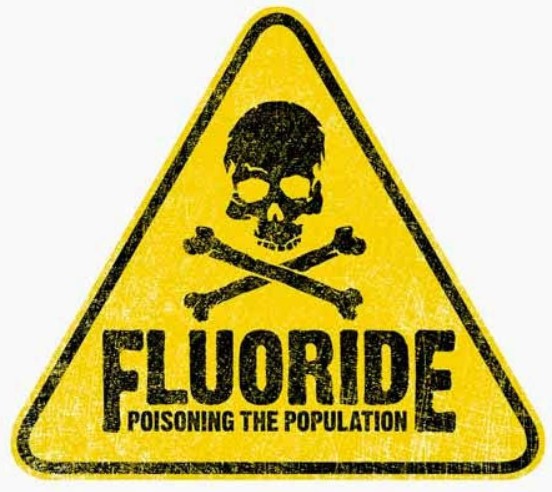SB282: Local Control Regarding Water Fluoridation

In Arkansas, the local control fluoride bill SB282 failed in the full Senate today, March 12, 2025, but thankfully the vote was expunged.
Meaning of expunged: a separate action was taken to remove the bill’s failure from the official record.
This was done by a motion and required approval from the Senate legislative body via a voice vote.
So, it will allow the bill to be reconsidered in the future without the stigma of failure and give flexibility in a future attempt.
.
Are you aware of these facts:

.
SB282 – AMENDING THE LAW CONCERNING PUBLIC WATER SYSTEMS; AND TO ALLOW VOTERS TO ELECT “FOR” OR “AGAINST” WATER FLUORIDATION.
The good sponsors of the bill are Senators Penzo and King, along with Representatives Duffield and Pilkington.
Here’s the history of the bill.
Locally: States must individually remove water fluoridation. It’s time that states take responsibility!
Nationally: Robert F. Kennedy, Jr., the current U.S. Health and Human Services Secretary, has been condemning water fluoridation for many years now and has stated that the Trump administration will recommend that fluoride be removed from our public drinking water.
Did you know that there’s no way to accurately measure how much fluoride intake that any of us have on a daily basis? The severity of an overdose depends on dose, duration, and individual factors like age and kidney function. Unfortunately, people with kidney disease may accumulate fluoride more easily.
Consider all of the sources of fluoridated water. Fluoride placed in any substance makes it deadly — water, toothpaste, mouthwash, juices, tea, sodas, sports drinks — this includes canned food and baked items by default — and anything that would contain fluoridated water. Remember, this includes restaurant food and drinks as well.
RFK, Jr. has labeled fluoride as an industrial waste and linked it to various health issues, including:
-
arthritis,
-
bone fractures,
-
bone cancer,
-
IQ loss,
-
neurodevelopmental disorders, and
-
thyroid disease.
In addition, excessive fluoride intake during tooth development can lead to dental fluorosis characterized by changes in tooth enamel ranging from mild discoloration to more severe enamel damage, and high levels of fluoride exposure have been linked to skeletal fluorosis, a condition resulting in joint stiffness and pain.
Serious concerns have been raised about the contaminants in the fluoridation chemicals! The exact number and concentration of these impurities depends on various factors, so it leaves one wondering and concerned.
The fluoride compounds added to our drinking water, typically fluorosilicic acid, sodium fluorosilicate, or sodium fluoride CAN contain trace contaminants due to their industrial origins.
While these chemicals supposedly must meet NSF/ANSI Standard 60 for drinking water safety, concerns have been raised about the presence of impurities/contaminants.

Looking at impurities, the Maximum Contaminant Level Goal (MCLG) for arsenic and lead is zero.
Arsenic and lead are both classified as hazardous substances and are regulated under multiple environmental laws due to their toxicity, persistence, and bioaccumulation risks! The public is not informed that fluoridation can mean daily exposure to arsenic, a known carcinogen, and lead, a known neurotoxin. Exposure via the additive is over and above that delivered in corroded lead pipes. Even low-dose, long-term exposure may pose health risks.
So, the nasty chemical additive fluoride that’s used to so-call “improve” dental health contains arsenic, which, incidentally, is allowed in measures of 0.010 ppm in drinking water by EPA standards — but again: the maximum contaminant level goal (MCLG) is zero, due to arsenic’s cancer-causing impact.
Here is more about arsenic, and we’ve listed some other deadly contaminants as well:
-
Arsenic- Classified as Hazardous Waste- MCLG is zero
-
-
A known carcinogen linked to cancer, cardiovascular disease, and developmental issues.
-
NSF testing has found trace amounts in some fluoridation additives, but the levels are supposed to remain below EPA’s Maximum Contaminant Level (MCL) of 0.010 mg/L (10 ppb). The EPA classifies arsenic as a known human carcinogen due to its link to lung, bladder, and skin cancers.
-
Arsenic and its compounds are listed as hazardous substances under the Resource Conservation and Recovery Act (RCRA) and the Comprehensive Environmental Response, Compensation, and Liability Act (CERCLA, or Superfund Law).
-
-
Aluminum
-
-
Fluoride has a strong affinity for aluminum, forming aluminum fluoride complexes, which some researchers suggest may impact the nervous system and contribute to Alzheimer’s disease, though this remains debated. More could be said here…
-
-
Barium
-
-
Linked to hypertension and cardiovascular problems when consumed in high doses.
-
Present in some fluoridation chemicals at trace levels.
-
-
Lead- Classified as Hazardous Waste- MCLG is zero
-
-
Can leach from pipes in older water systems, potentially affecting brain development in children.
-
Lead is listed as a hazardous waste under RCRA due to its high toxicity to the nervous system, especially in children.
-
Some studies suggest that fluorosilicic acid may increase lead leaching from pipes, though the EPA states that properly maintained systems mitigate this risk, BUT what if systems are NOT up to par all the time? The EPA and CDC recognize there is no safe level of lead exposure.
-
-
Mercury
-
-
Extremely toxic in even trace amounts, affecting neurological and kidney function.
-
Fluoride additives may contain very low levels, but regulatory agencies are supposed to set strict limits.
-
-
Radium (Radioactive Isotopes)
-
-
Can be found in phosphate rock deposits, which are the source of fluorosilicic acid.
-
Exposure is linked to bone cancer and leukemia.
-
Have you seen that a California federal judge has already ordered the U.S. Environmental Protection Agency (EPA) to deal with fluoride in drinking water because the toxic waste poses a high risk to our children’s intellectual development? (See Secure Arkansas’ September 2024 article about that here: Federal Lawsuit Victory over U.S Water Fluoridation!)
Fluoride IS accumulative, so this IS an issue of bodily autonomy.
And please take note of this! From PubMed Central: Physiologic Conditions Affect Toxicity of Ingested Industrial Fluoride
So, fluoride has the ability to cause long-lasting negative health effects in various bodily systems.
This is why it’s so important that we, the people, have a say in whether or not our public water is fluoridated in Arkansas.
Secure Arkansas has been against water fluoridation and against the 2011 Arkansas water fluoridation mandate, even since before it was passed.
Some wonderful news: Utah is now set to become the first U.S. state to BAN fluoride from its public water systems! Governor Spencer Cox said the bill will take effect in early May.
So, let’s take a good look at the state of Utah and see why fluoridation was banned there. Secure Arkansas consulted Phyllis Mullenix Ph.D., and she was concerned about the metal content of Hydrofluorosilicic Acid (HFS).
This chemical compound is primarily used for water fluoridation, metal treatment, and industrial applications.
From Dr. Phyllis Mullenix’s vital report for Utah:
Here are the Certificates of Analysis (COAs) for Hydrofluorosilicic Acid (HFS) that were performed by a state certified independent laboratory covering 3 different years — 2012, 2013 and 2018. All HFS samples were NSF Std. 60 certified. Remember, the MCLG for arsenic and lead is zero.
2012 COA: COA was generated during an investigation of an HFS delivery accident which resulted in a respiratory injury to a water operator. I was consulted regarding this incident, so I included the accident narrative FYI. The COA for HFS arsenic revealed 63.7 ppm in the raw additive and a lead content of 22.2 ppm.
2013 COA: COA was generated as a routine check of metal levels in HFS by Weber Basin WCD. As far as I know, this COA was not a part of any accident investigation, just a check of batch-by-batch content. Arsenic = 67.8 ppm; Lead = none detected.
2018 COA: Another routine check of HFS metal content. Arsenic = 69.7 ppm and lead = none detected.
Overall, high arsenic content is common to HFS. High Lead content occurs less frequently, but it can appear unexpectedly. In the event of an overfeed, an accurate COA per batch is the only way to determine risk of harm to a consumer. The exposure profile (fluoride + arsenic or fluoride + arsenic + lead) is key to proper diagnosis and treatment of public water system poisonings.
Dr. Mullenix goes on to simply state:
Furthermore- the high levels of arsenic so typical of HFS is a problem for Utah now because HFS at the well sites must be hauled off as hazardous waste.
Any level of arsenic and lead greater than 5 ppm dictates a classification as hazardous waste.
HFS also has a pH of 2, so again it must be removed as hazardous waste.
Similarly, Florida‘s Surgeon General, Joseph Ladapo, has recommended against fluoride in drinking water, citing concerns about potential cognitive effects in children. Governor Ron DeSantis has praised these efforts, anticipating that federal health regulators under Kennedy’s leadership will adopt a similar stance.
So RFK, Jr. will recommend, advise, or suggest that action be taken on removing fluoride from our public water systems. We are finally seeing legal and state-level developments influencing the national discourse on chemical water fluoridation that will lead to revised regulations in our near future that will make America healthy again.
It’s now time to contact the entire Arkansas Senate and ask them to VOTE FOR SB282, local control on water fluoridation (although there may be an amended version coming).
Arkansas Senators 2025:
As always, our articles may be viewed on our website at SecureArkansas.com. Once there, you may:
- view current articles on the main page;
- view older articles by clicking “Posts & Articles” at the top left of the main page and scrolling down.
- view additional past articles by clicking the “Next Page” button at the bottom right.
To find information about a topic, just type it into the Search box on our website, and click Enter!
Click here if you’d like to sign up to receive Secure Arkansas email alerts.

Securing the blessings of liberty,
Secure Arkansas
securetherepublic.com/arkansas
info@securetherepublic.com
